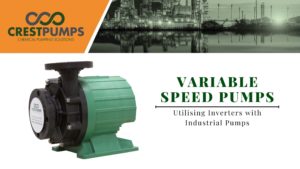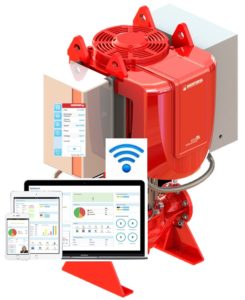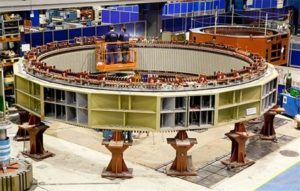Guideline on Variable Speed Pumping
In their latest collaboration, the Hydraulic Institute and Europump have published a new guide for designing, specifying and operating successful variable speed pumping systems for lowering energy, maintenance and life cycle costs.
Entitled Variable Speed Pumping: A Guide To Successful Applications, the book was developed for plant owners and designers as well as pump, motor and drive manufacturers and distributors. The operation of pumping systems, particularly energy, maintenance and other operating costs, represents a major expense in many industries and applications. This educationally oriented guide helps users focus on cost savings and performance optimization of pumping systems with variable-speed drive (VSD) technology. Compiled and written by motor and drive experts in industry and academia, the guide is applicable for both new and retrofit installations.
“Applying speed control can save energy, reduce equipment and maintenance costs, and increase reliability. Optimizing pumping system performance requires utilizing the most cost-effective variable-speed drive (VSD) for a given application. The key is to design all elements of the pumping system to function optimally for the lowest life cycle cost,” explains Gregg Romanyshyn, technical director of HI. “This guide assists in determining whether variable speed pumping is an appropriate choice, and if it is, it details how to incorporate variable speed drives into specific applications.”
The 150+ page guide outlines the various types of pumps and variable speed and variable frequency drives for multiple applications. System and performance curves, control principles, selection process, financial justification, tables, illustrations, color photographs, case studies and flow charts have been included to help clarify the appropriate specification methodology.
According to Romanyshyn, traditional flow control methods (those using throttling valves or bypass lines) waste energy and frequently increase operating and maintenance costs. However, when properly applied, VSDs have the potential to significantly lower energy costs, improve overall system reliability and minimize pumping system life cycle costs. One example from the guide addresses friction head: “In systems with only friction head, reduction in pump speed results in a substantial reduction in power consumption, while the pump continues to operate near its best efficiency point (BEP).” This example also includes a detailed graph, showing the effect of pump speed change in a system with only friction loss.
The new guide is a companion to the earlier HI-Europump Pump Life Cycle Costs: A Guide to LCC Analysis for Pumping Systems. The cost for Variable Speed Pumping: A Guide To Successful Applications is $95. In addition, the 200-page Pump Life Cycle Costs: A Guide to LCC Analysis for Pumping Systems is available for $125. Both guides can be ordered online through HI’s e-Store at www.pumps.org.
A free copy of a 16-page Executive Summary of the Variable Speed Pumping Guide, written in conjunction with the US Department of Energy, can be downloaded at www.pumps.org.
Source: Hydraulic Institute Inc.





